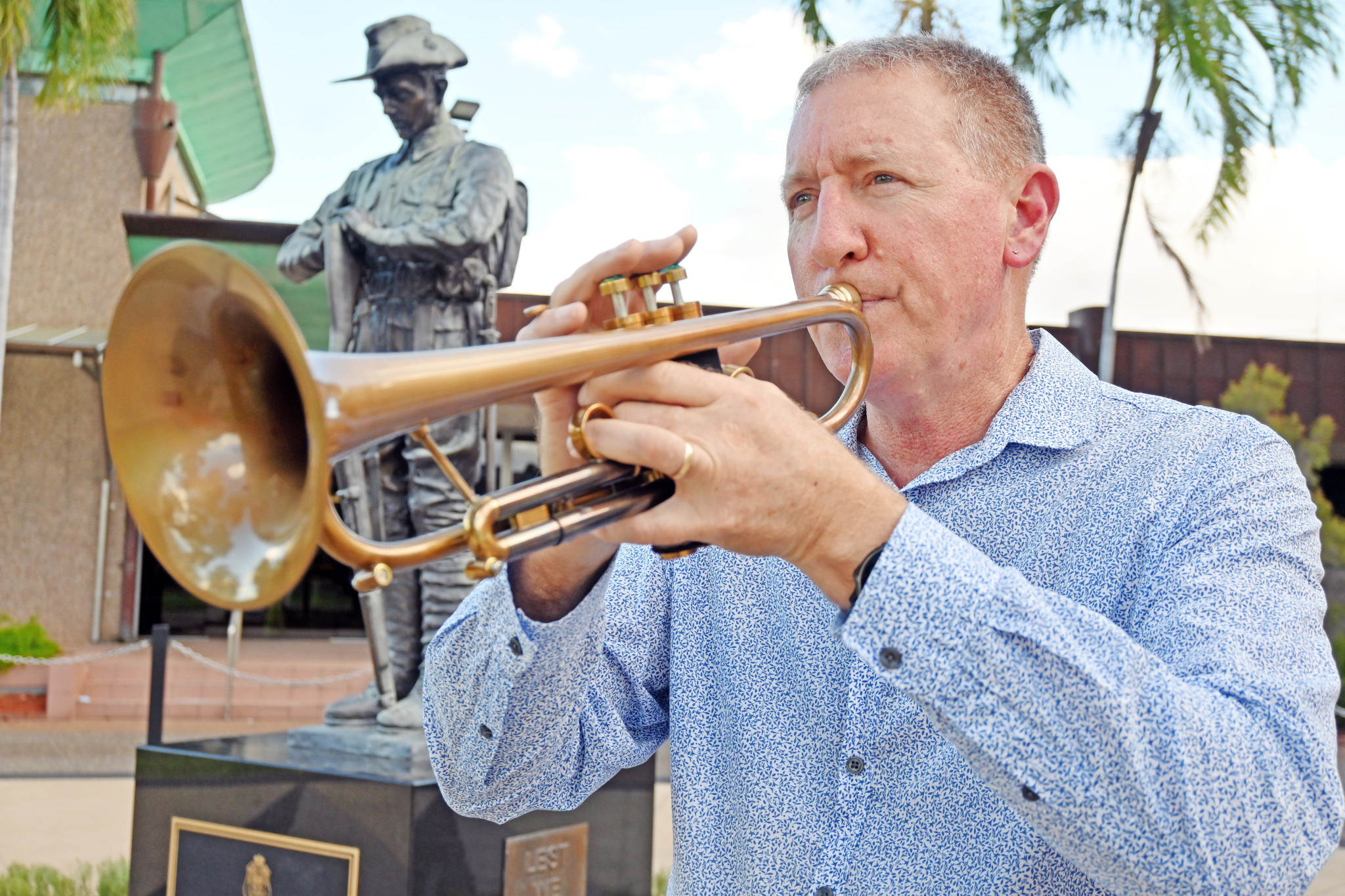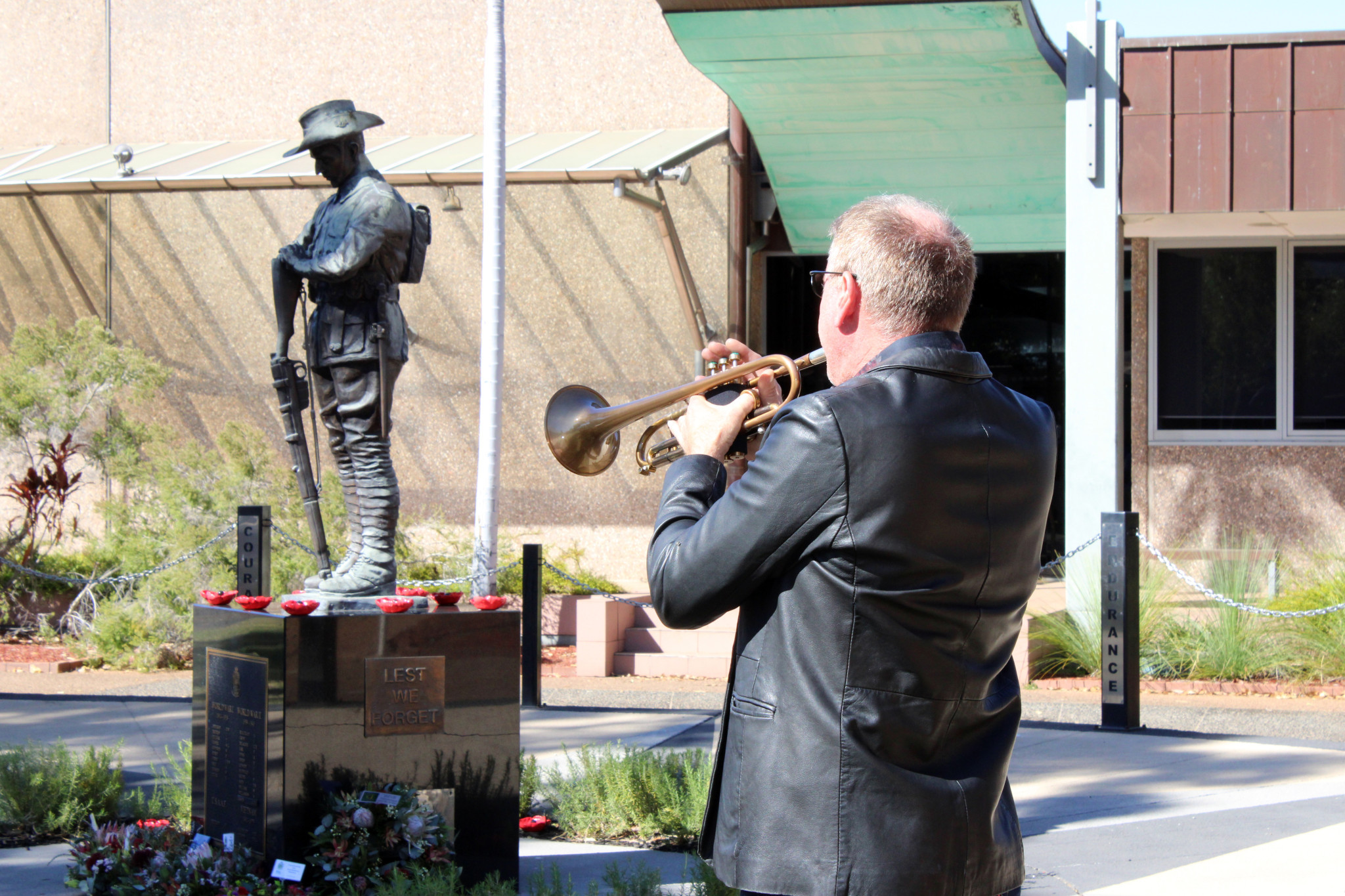General News
23 April, 2025
The Last Post: Keith Cox ready for final performance
Keith Cox has played at every Anzac Day service in Mount Isa since 1999.

No matter if the dawn winds were chilly or the rain clouds were gathering overhead.
No matter if it was from the roof of the former RSL building or the cenotaph at the Civic Centre.
Keith Cox has been a mainstay of Mount Isa Anzac Day services for a quarter of a century.
But on Friday, he will play his final rendition of the Last Post in the city.
With the underground copper mines and concentrator closing this year, Keith has seen an opportunity to retire just as he celebrates his 60th birthday.
After more than three decades at Mount Isa Mines, the born and bred local will pack up with his wife Julie and relocate to Woodgate to be closer to family.
Keith has a long association with developing local musicians in the city and hopes a younger person will take up the mantle at the annual Anzac Day services.
He said it would be difficult to walk away from such a long commitment to the commemorations.
“Over the years we have specifically said no to some things to make sure we would be in Mount Isa for Anzac Day,” he said.
“I have just always seen it as something I can do to pay tribute to the sacrifice these men and women made.”
Keith began his musical apprenticeship with piano lessons from age eight with Presbyterian Church organist Phoebe Taudevin, who owned a music centre on West Street, and later June Burton, where he studied the Australian Music Examination Board process rising to a grade five in piano theory and practice by high school.
It would not be until he was at Happy Valley State School under the tutelage of teacher Fred Coleman and his instrumental music classes that he picked up his first brass instrument.
“I chose the trombone,” Keith explained.
“I am still not sure why. I think I saw it on variety television being played in a comedy skit when I was young and thought the sounds being made just stood out. I think the instrument just stayed in my mind. None of us knew anything in those early instrumental music classes, we basically started from scratch.
“Fred took us on this musical journey until we were able to play music as a unit.”
Keith added guitar to his repertoire during his teenage years and picked up the trumpet while playing in a brass band in Rockhampton during a brief studying stint.
Back in the North West, Keith became a regular fixture on the music scene, playing in ensembles, church bands and various amateur and school theatre productions while he worked at Mount Isa Mines and raised a family.
His involvement in Anzac Day began when he began installing his church’s PA system to help with RSL services in the late 1990s and he took notice of the tape they used during the key bugle interludes.
“One year I went to the dawn service and they had a Year 12 kid try to play the Last Post and he just butchered it, so after that the RSL used to play a tape,” Keith said.
“I was setting up the PA system and they were asking me about this tape. So, I said to them, ‘how about I go home and get my trumpet and I’ll play it for you?’
“I went home, I knew I had the music for it, and I think I quickly ran through just to make sure I could actually do it and then drove back and performed it.
“That’s how it all began.”

Keith continues to perform at Anzac Day with his trumpet, preferring it to the traditional bugle.
He explained there were a lot of cheap bugles manufactured overseas but it was difficult to find one that could appropriately deliver the solemn and sober sound required to mark Australia’s national day of remembrance.
During the services, Keith performs on the trumpet without moving any of the finger valves, thus replicating the same process as a bugle player.
The rendition of the Last Post can make a significant difference to the awe and impact of the commemoration service.
So how does he handle the pressure in the quiet moments before he begins the performance?
“There is about 45 minutes from the time the ceremony starts to when I have to play,” he explains.
“It is quite a long time to settle any nerves.
“But just before I start playing, I just try to focus on the first note.
“I know if I can just get that first note right, then the rest will follow.”